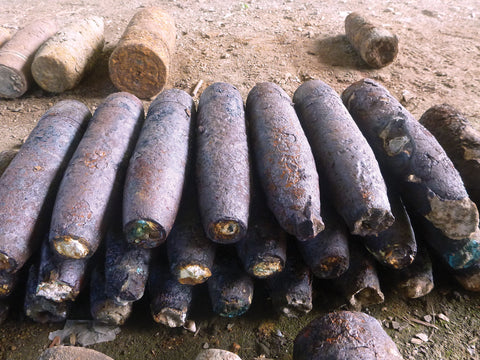
WWII Ordnance Still Kills Civilians in the Solomons. This Non-Profit Is Working to Change That.
The shooting stopped nearly 80 years ago, but the dying continues in the South Pacific’s Solomon Islands, scene of some of the bloodiest fighting of World War II.
Every year at least 20 islanders are killed or maimed by the detonation of leftover bombs, artillery shells, or other munitions. In January, the United States stepped up efforts to solve the problem, providing $1 million to the demining nonprofit HALO Trust to locate and document unexploded ordnance left behind by American and Japanese forces.
A survey is considered long overdue. There are no reliable records on where the bombs are most likely to be buried, just anecdotes and old war stories. The munitions are often discovered in the worst way possible—when someone disturbs them and sets them off. In May 2021, for instance, two people were killed by an explosion at a Seventh Day Adventist Church cookout; parishioners had unknowingly started a fire on top of a buried American artillery shell.
Solomon
Island policemen work to clear some of the unexploded World War II ordnance
still plaguing the island nation.
Adding to the problem: local fishermen often dig up the munitions and turn them into homemade fishing bombs. One explosion can bring in a catch worth $240—more than a month’s income for the average Solomon Islander, according to reporting by the nonprofit news site Honolulu Civil Beat. Farmers burning vegetation to clear land for crops can also detonate hidden munitions.
The Solomon Islands, an impoverished nation of 900 islands and 700,000 people, gained independence from Britain in 1978, but its government has been too overwhelmed fighting economic woes and political unrest to do much about the problem. And the issue has been something of an afterthought for Japan and the United States. But U.S. officials have recently begun to pay more attention to the Solomons, partly to counter growing Chinese influence in the Pacific.
The Japanese occupied the Solomon Islands in early 1942 and began constructing naval and air bases to defend their invasion of New Guinea and to disrupt Allied supply lines. The Allies counterattacked in August 1942, sending a force led by American Marines onto the Solomons’ Guadalcanal island. Japanese troops were vanquished on Guadalcanal by February 1943 after months of vicious jungle warfare, but fighting continued in the Solomons until the end of the war in August 1945.
